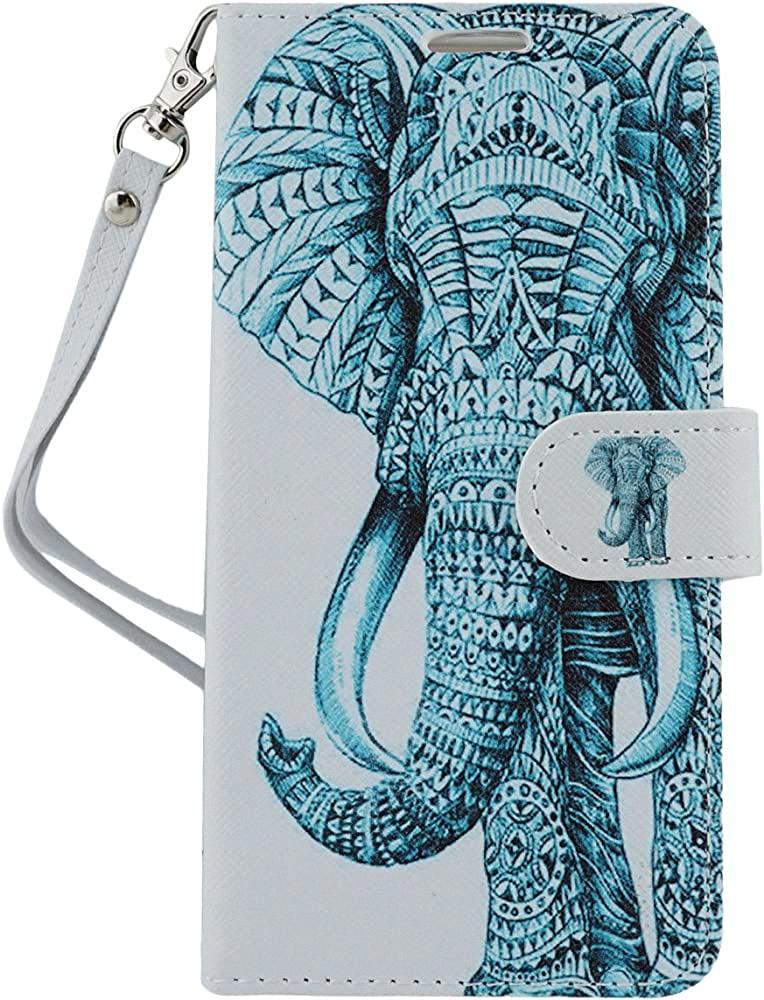Elephants are one of the most iconic animals on the planet. Known for their intelligence, empathy, and sheer size, these gentle giants have captured the hearts of people all over the world. One question that often comes up when discussing elephants is whether or not they breathe through their trunks. In short, the answer is yes, but there is much more to this fascinating topic than meets the eye.
Elephants are unique in the animal kingdom in that they have a pleural cavity. This means that they are not able to expand their lungs in the same way that other animals do. Instead, they rely on direct muscular action to expand their lungs and breathe. This is why you may notice an elephant’s chest moving in and out as it breathes.
However, elephants do use their trunks to help them breathe. Their trunks are incredibly versatile organs that serve a multitude of purposes, including smelling, trumpeting, drinking, and grabbing things. When an elephant is breathing through its trunk, it is able to retain water or dust in the trunk without having to hold its breath.
The process of breathing through the trunk is different than it is for other animals. When you breathe through your nose or mouth, air moves through your nostrils or mouth and into your lungs. However, when an elephant breathes through its trunk, air moves in the opposite direction. It begins in the lungs and then moves out through the trunk.
This unique system allows elephants to use their trunks to both breathe and smell at the same time. Their sense of smell is incredibly important to them, as they use it to detect food, water, and potential dangers. When they are sniffing out new scents, they move their trunks back and forth, gathering as much information as possible.
Elephants’ trunks are truly remarkable. They conain about 40,000 muscles, making them incredibly strong and flexible. African elephants even have two fingerlike features on the end of their trunks that they can use to grab small items, such as leaves or berries.
Elephants do breathe through their trunks, but this is just one of the many fascinating things about these incredible animals. Their trunks are versatile organs that serve a multitude of purposes, and they are essential to the elephants’ survival in the wild. Whether you are a wildlife enthusiast or just someone who appreciates the beauty of nature, elephants are sure to capture your heart and imagination.
Can Elephants Breathe Through Their Trunks?
Elephants can breathe out of their trunk. In fact, the trunk is a crucial part of an elephant’s respiratory system. The trunk is essentially an extension of the elephant’s nasal cavity and contains thousands of tiny muscles that allow it to move in a variety of ways. When an elephant inhales, air enters its trunk and travels up into its nasal passages. When the elephant exhales, the air is forced out through the trunk. Additionally, elephants can also breathe through their mouth, which alows them to retain water or dust in the trunk without having to hold their breath. So, in short, elephants can breathe out of their trunk as well as through their mouth.
Source: music.bucketheadpikes.com
Breathing Patterns of Elephants
An elephant breathes differently than most other mammals due to the absence of a pleural cavity. In elephants, connective tissue directly joins their lungs to their ribcage and diaphragm. This means that the lungs are directly attached to the wall of the chest, without any space in between. To inhale, the elephant’s diaphragm muscles contract, moving downwards and expanding the lungs. This creates a negative pressure that draws air into the lungs. When the diaphragm muscles relax, the lungs contract, pushing the air out. Because elephants are such large animals, they require a lot of oxygen, and their breathing rate can be quite slow, with only around 8-10 breaths per minute. Despite this slower rate, elephants can take in a large amount of air with each breath, allowing them to efficiently exchange oxygen and carbon dioxide. while the process of breathing in elephants may differ from other mammals, it is an effective and efficient means of supplying oxygen to their bodies.
Do Elephants Use Their Trunks to Smell?
Elephants do smell through thir trunks. In fact, the trunk is an incredibly versatile organ that serves many functions, including breathing, smelling, and drawing water in to squirt into the mouth. The trunk contains an incredible number of olfactory receptors, which are responsible for detecting different scents. These receptors are located in the lining of the nostrils, which are located at the tip of the trunk. When an elephant wants to smell something, it will move its trunk back and forth, detecting new scents and information. This sense of smell is in constant use for elephants, as they rely on it to find food, water, and potential mates, as well as to communicate with other elephants. the elephant’s trunk is an incredibly important and versatile organ that is essential to its survival.
The Function of an Elephant’s Trunk
An elephant’s trunk is a long nose, but it’s not just any nose. In fact, it’s a highly specialized organ that serves a variety of functions. For example, an elephant’s trunk enables them to smell things from far away, which is especially usefl when trying to find food or water. Additionally, the trunk allows elephants to breathe through their nose, just like humans.
But that’s not all. Elephants also use their trunks to make a variety of sounds, including trumpeting and rumbling. They can even use their trunks to communicate with other elephants over long distances. And, of course, the trunk is also used for grabbing things, including food and water, as well as for picking up and moving objects.
Interestingly, an elephant’s trunk contains around 40,000 muscles, making it extremely strong and flexible. African elephants even have a pair of finger-like features on the end of their trunk that they can use to grasp small items. So, while it may be accurate to call an elephant’s trunk a nose, it’s much more than that.
Are Elephants Afraid of Mice?
There is actually no conclusive evidence that elephants are afraid of mice. While it is a popular belief that elephants fear mice because the tiny creatures nibble on their feet or can climb up into their trunks, there is no scientific proof to support thee claims. In fact, elephants are known to be very intelligent and perceptive animals, and their fear responses are typically based on real threats such as predators or unfamiliar situations. While it is possible that an elephant may react with surprise or alarm to the sudden appearance of a mouse, it is unlikely that they would be afraid of them in the same way that they might be afraid of a lion or other large predator. Ultimately, the idea that elephants are afraid of mice may be more of a cultural myth than a scientific fact.
Source: ebay.com
Can Elephants Regrow Their Trunks?
An elephant’s trunk cannot grow back if it is lost or injured beyond repair. The trunk is a unique and complex organ that is made up of over 40,000 muscles and tendons, and contains thousands of nerve endings. It is used for a variety of tasks, including breathing, smelling, touching, grasping, and communicating. If an elephant were to lose its trunk, it would greatly impact its ability to survive in the wild. Therefore, it is important to protect these magnificent animals and prevent them from being harmed in any way.
Do Elephants Sleep While Lying Down?
Elephants do lay down to sleep, but they are also capable of sleeping whie standing up. Research has shown that elephants in the wild are more likely to sleep standing up, as it saves them the energy and time it would take to pick themselves up off the ground. However, in captivity, elephants are often observed lying down to sleep. Elephants are known to sleep for several hours a day, and they usually do so at night or during the early morning. When sleeping, elephants curl up their trunks and place them on the ground, providing a cushion for their heads. They also often rest their heads on their tusks or on nearby objects. while elephants can sleep both lying down and standing up, they are more likely to choose the latter to conserve energy in the wild.
The Significance of Elephants Raising Their Trunks
Elephants often put their trunks in the air for a variety of reasons. One of the most common reasons is to improve their sense of smell. Elephants have an exceptional sense of smell, and by raising their trunks, they can detect scents from far away. This helps them locate food, water, and other elephants. Additionally, elephants may raise their trunks in the air as a sign of alarm or to communicate with other elephants. By using different trunk movements and sounds, they can convey messages to each other. elephants may raise their trunks in the air to regulate their body temperature. By blowing air throuh their trunks, they can cool themselves down on hot days. lifting their trunks is an important behavior for elephants that helps them survive and thrive in their natural habitat.
Do Elephants Drink Water Through Their Trunks?
Contrary to popular belief, elephants cannot drink water through their trunks alone. While the trunk is a crucial organ for feeding and drinking, elephants use it in a specific way to consume water. When an elephant wants to drink water, it will suck water up part way into its trunk and then use its trunk to spray the water into its mouth to drink. This process allows elephants to consume large quantities of water quickly and efficiently. Therefore, whie the trunk plays an essential role in the drinking process for elephants, it is not the only method they use to consume water.
Source: mosnovo.com
Do Elephants Bathe?
Elephants do shower, in a way. Elephants have sensitive skin, so it’s important for them to keep their skin clean. They use their trunks to suck up water and then spray it all over their bodies to wash away dirt and sweat. Elephants also love to take baths in rivers, lakes, or pools of water. They use their trunks as a snorkel to breathe while they submerge themselvs in water. Bathing is not just for cleanliness, it’s also a way for elephants to cool off in hot weather. Additionally, elephants occasionally take mud baths, which not only helps them to cool off but also protects their skin from the harsh sun. So, elephants may not take traditional showers like humans, but they do have their own unique ways of keeping clean and fresh.
Do Elephants Perceive Color?
Elephants do see color, but their color vision is different from that of humans. Like most mammals, elephants have dichromatic color vision, which means they have two types of color receptors or cones in their eyes. Humans, on the other hand, have trichromatic color vision and can see a broader range of colors.
The two types of cones in elephant eyes are sensitive to blue and green light, but they lack the tird cone that humans have, which is sensitive to red light. As a result, elephants have difficulty distinguishing between red and green colors and may perceive them as shades of gray or brown.
However, recent studies have suggested that elephants may have some level of sensitivity to red light due to the presence of a small amount of the red-sensitive cone pigment in their eyes. This means that elephants may be able to see some shades of red, but not as vividly as humans.
Moreover, elephants are known to have excellent night vision, which is likely due to the presence of additional visual pigments in their eyes that are sensitive to blue and ultraviolet light. This enables them to see better in low light conditions and distinguish between different shades of blue and violet.
While elephants do have color vision, it is not as advanced as that of humans, and they may perceive colors differently.
Do Elephants Have a Better Sense of Smell Than Dogs?
Elephants have a better sense of smell than dogs. Elephants have more smell receptors than any mammal, including dogs. They can sniff out food that is several miles away and are capable of detecting a wide range of scents. In fact, elephants are known to have a keen sense of smell that has been used by humans for centuries in the form of tracking and hunting. While dogs are known for ther ability to track and detect scents as well, elephants are considered to have a more advanced olfactory system. Therefore, it can be concluded that elephants have a better sense of smell than dogs.
Five Interesting Facts About Elephants
Elephants are fascinating creatures with a lot of unique traits and behaviors. Here are five interesting facts about elephants:
1. Elephants are the world’s largest land animal, with adult males weighing up to 14,000 pounds and standing up to 10 feet tall at the shoulder.
2. You can tell the three species of elephants apart by their ears. African elephants have larger ears that resemble the shape of the African continent, while Asian elephants have smaller ears that are more rounded. The thid species, the forest elephant, has ears that are more oval-shaped.
3. Elephants’ trunks are incredibly versatile and capable of a wide range of movements. They can use their trunks to pick up objects as small as a blade of grass or as large as a tree trunk. They can also use their trunks to suck up water and spray it into their mouths or onto their bodies.
4. Elephants’ tusks are actually teeth, and they continue to grow throughout the animal’s lifetime. These tusks are used for a variety of purposes, including digging for water and roots, stripping bark from trees, and defending against predators.
5. Elephants have extremely thick skin, which can be up to 2.5 centimeters thick in some areas. This helps to protect them from the sun, insects, and physical damage from other animals. Despite their tough skin, elephants are incredibly sensitive and can feel even the slightest touch with their trunks.
Source: amazon.com
Do Elephants Have Tongues?
Elephants do have tongues. In fact, elephants have very large tongues which are essentially muscles. These tongues are used to help elephants eat and drink. Elephants are herbivores, which means that they primarily eat plants. They use their trunks to grab and collect food, and then their tongues pull the food into their mouths, helping them to swallow it. Additionally, elephants use their tongues to drink water by pulling it into their mouths from nearby water sources. So, in summary, elephants do indeed have tongues which play an important role in their eating and drinking habits.
The Sensitivity of an Elephant’s Trunk
According to research conducted by scientists, an elephant’s trunk is one of the most sensitive body parts in the animal kingdom. Elephants use their trunks to constantly touch and manipulate things, almost like having a hand. The trunk contains thousands of muscles, and at the tip, there are two finger-like projections that can sense even the slightest touch. Additionally, the trunk has a highly developed sense of smell, allowing elephants to detect scents from miles away. the sensitivity of an elephant’s trunk is remarkable and crucial to their daily activities such as feeding, socializing, and navigating their surroundings.
Conclusion
Elephants are fascinating creatures with unique anatomical features that allow them to thrive in their natural habitats. Their ability to breathe through their trunks and mouth, and their lack of a pleural cavity, sets them apart from other mammals. Their sense of smell is incredibly sharp, and their trunks serve multiple purposes, including grabbing food and water, and communicating with other elephants. With their large size and gentle nature, elephants continue to capture the hearts of people all over the world. However, they face many threats, including habitat loss and poaching, which puts their survival at risk. It is important that we continue to work toards protecting these magnificent animals and their habitats for generations to come.




